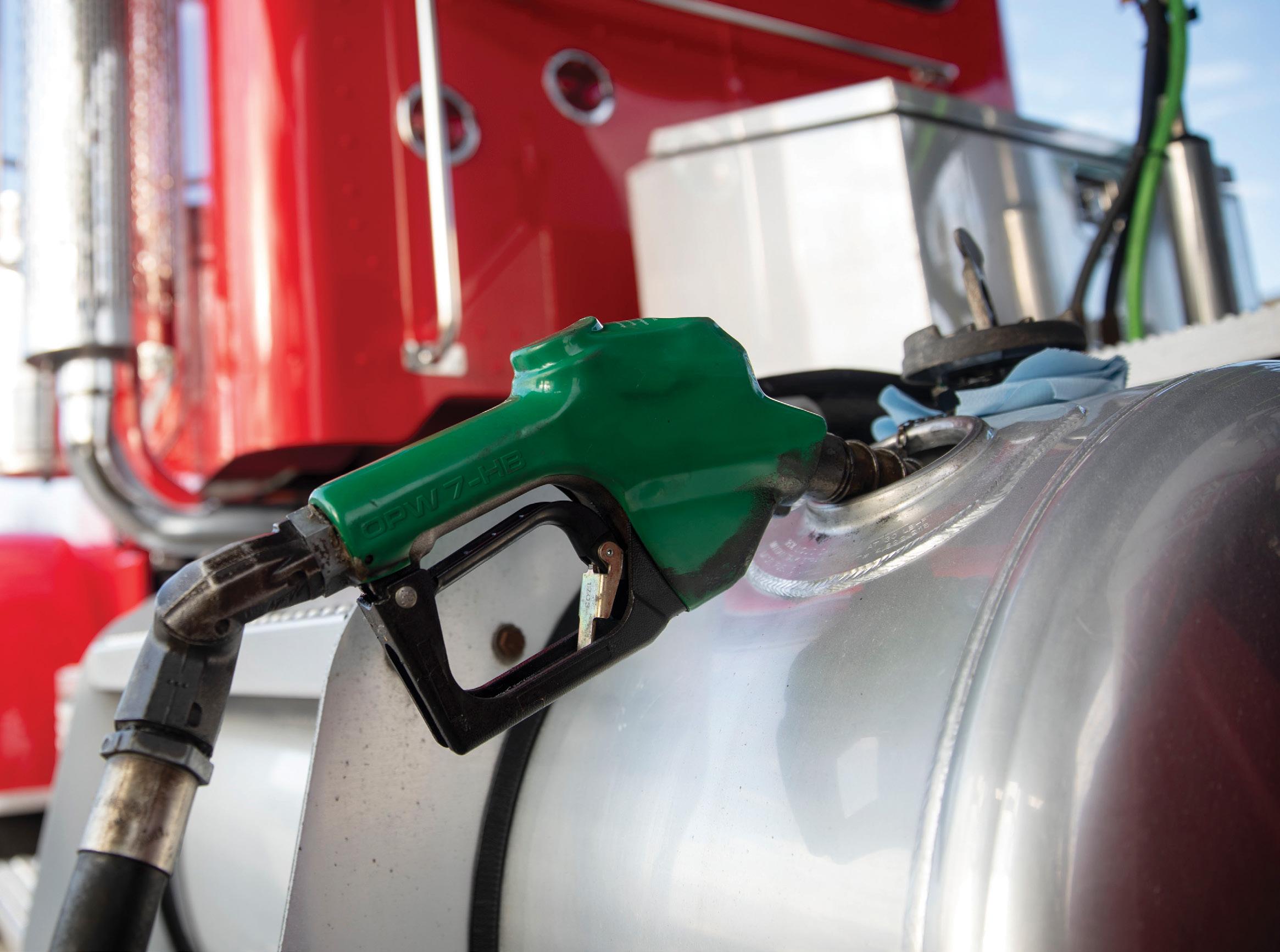
3 minute read
Diesel Powers Forward
What’s in store in 2023 for consumer diesel vehicles and diesel fuel prices?
BY ALLEN SCHAEFFER
By all accounts, the year ahead promises more of the same: an off-balance economy tipping toward the recessionary zone, with lingering labor and supply chain issues and dynamic energy markets.
Annual auto sales in the United States in 2022 were down 8.6% due to continuing supply problems and, most recently, headwinds due to higher interest rates as well as a slowing of automotive demand. Automotive sales will end the year at about 13.8 million, which is the lowest since 2011, when the economy was recovering from the Great Recession. Consumers have more efficient vehicle choices than ever before, with manufacturers offering a growing array of fully electric vehicles including pickup trucks, cars and SUVs along with a few fuel cell vehicles and a host of plug-in hybrids, as well as those powered by conventional internal combustion engines. EV sales in 2022 were 5.9% of all vehicles for the entire year, up from 3.3% for all of 2021. The diversity in fuel options and vehicle technology choices today compared to a decade ago seems mind-numbing, making it clear that at least for the moment, we are not a one-size-fits-all world when it comes to our vehicles.
Looking at diesels, for 2022 these vehicles represent 1.3% of total sales compared to 1.2% in 2021. For 2023 there are 32 options for diesel engines in vans, pickup trucks and SUVs available in the United States. In the advanced diesel vehicle category, last year’s U.S. sales were led by the Mercedes Sprinter Van followed by three pickups—Chevy Silverado, GMC Sierra and Ram 1500—and then the Ford Transit van.
Commercial diesel models classified as Class 2 and 3 vehicles (over 8,500 lbs. gross vehicle weight rating) are series 2500 and 3500 heavy-duty pickup trucks. Sales of these commercial diesels represented an estimated 3.5% of total sales in 2022, up from 3.2% in 2021, as the overall declining vehicle market enabled a greater share with similar sales volumes.
This year, General Motors will debut a new diesel engine (Duramax 3.0L inline six-cylinder model LZ0) in the
Chevrolet Silverado 1500 pickup truck. GM’s diesels include those rated by the U.S. EPA at 29 mpg city, with some models having a driving range of 756 miles on a single tank of fuel. No range anxiety here!
Diesel drivers have choices about fueling their vehicles. All diesel models available today are certified by manufacturers as capable of using B20 fuels—20% biodiesel/80% ultra-low-sulfur petroleum diesel. According to the U.S. Department of Energy Alternative Fuels Data Center, more than 800 retail stations sell biodiesel across the country.
DIESEL FUEL PRICES: SETTLING DOWN?
Distillate fuels like diesel were in high global demand in 2022, with prices substantially impacted by the Russian war against Ukraine, seeing the highest price at the pump ever recorded. At the time of this writing, diesel prices are running at $4.549 (national) to $5.08 a gallon (West Coast), up 89 cents per gallon from last year.
Recent studies by the Clean Fuels Alliance America showed that the U.S. production of biodiesel and renewable diesel consistently reduces distillate fuel prices by increasing the supply. As the production and availability of cleaner, better fuels grew over the last decade, the price impact increased to a 4% benefit in 2020 and 2021, keeping diesel fuel prices lower at the pump.
Looking ahead to the rest of 2023, the Energy Information Administration’s (EIA) Short-Term Energy Outlook forecasts global oil inventories higher at the end of 2023 than earlier predictions, leaving crude projections for $92 per barrel in 2023, which is $3 per barrel less than forecasted in December 2022.

EIA projects U.S. refinery utilization will remain near its five-year average through 2023. It expects that the combination of a slight contraction in the economy and refinery maximization of distillate fuel production will reduce distillate prices in the next five months.
Renewable Biodiesel Fuels
The use of renewable biodiesel fuels is growing as a key strategy to help decarbonize the transportation sector. More investment in feedstocks and refining capacity to produce the high-quality renewable fuels is necessary to achieve these strategic goals. The global renewable diesel market by production has reached 2.61 billion gallons in 2021. The market is expected to reach 7.45 billion gallons per year by 2027.
According to the EIA, biodiesel production averaged about 0.123 million barrels per day in 2022 and is expected to expand to 0.128 million barrels per day in 2023. Biodiesel net imports are expected to average 0.003 million barrels per day in 2022 and 2023, up from 0.001 million barrels per day in 2021. EIA also forecasts that more renewable diesel fuel will have been produced than conventional biodiesel fuels at the end of 2022. Depending on feedstocks, using advanced renewable biodiesel fuels instead of petroleum-based fuels lowers greenhouse gas emissions by anywhere from 50% to 85%, along with reductions in other emissions like particulates.
No one knows exactly where this year will take us, but at this moment it feels like flashing yellow lights at a busy intersection. Will supply chain pressures finally ease? Will a new COVID-19 variant upend the global workforce? What happens in the Russia-Ukraine war? If there is a recession, how long will it last and how bad will it be? When will retail fuel prices come back to earth? Will automakers’ bets on EVs pan out? What is the future for internal combustion engines and sustainable fuels as a key climate strategy?
That’s why in 2023 maybe the best advice comes from the airline industry: “Even if the captain has turned off the seat-belt sign, we recommend you keep your seat belt fastened at all times.








